Super fragrant, tangy and comforting, Lanzhou beef noodle soup is a culinary legend from the city which it’s named after. Check out this simplified version!
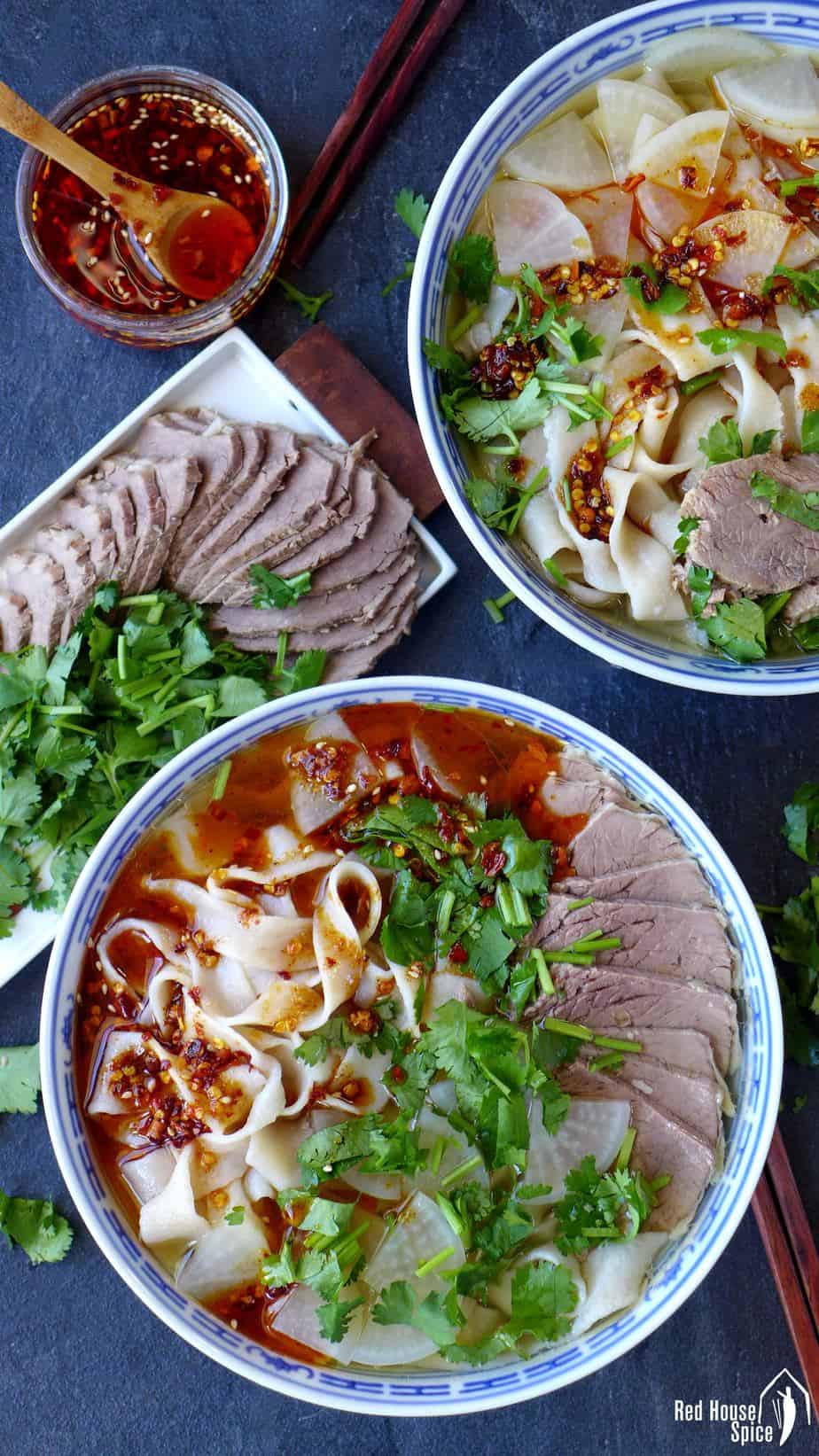
If you’re a noodle fanatic like me, don’t miss today’s recipe: Lanzhou beef noodle soup (兰州牛肉面), aka Lanzhou La Mian(兰州拉面). Super aromatic, tangy and comforting, it’s one of the most popular noodle dishes in China.
Named after the city from which it originates, this famous beef noodle dish is synonymous with Lanzhou and one of the most important elements of the local food culture.
My personal memory
I spent all my teenage years in Lanzhou (兰州), the capital of Gansu province in the Northwest of China, and Lanzhou beef noodle soup was a regular breakfast treat. In a small cafe beside my school, hundreds of bowls of beef noodle soup were freshly made each morning by a skillful team in a tiny kitchen.
Although the queue was long, the service was always super fast and the taste was always spot on. To me, it’s what I miss the most after moving from Lanzhou. Every time I go back, I take every opportunity to enjoy this humble yet scrumptious delicacy.
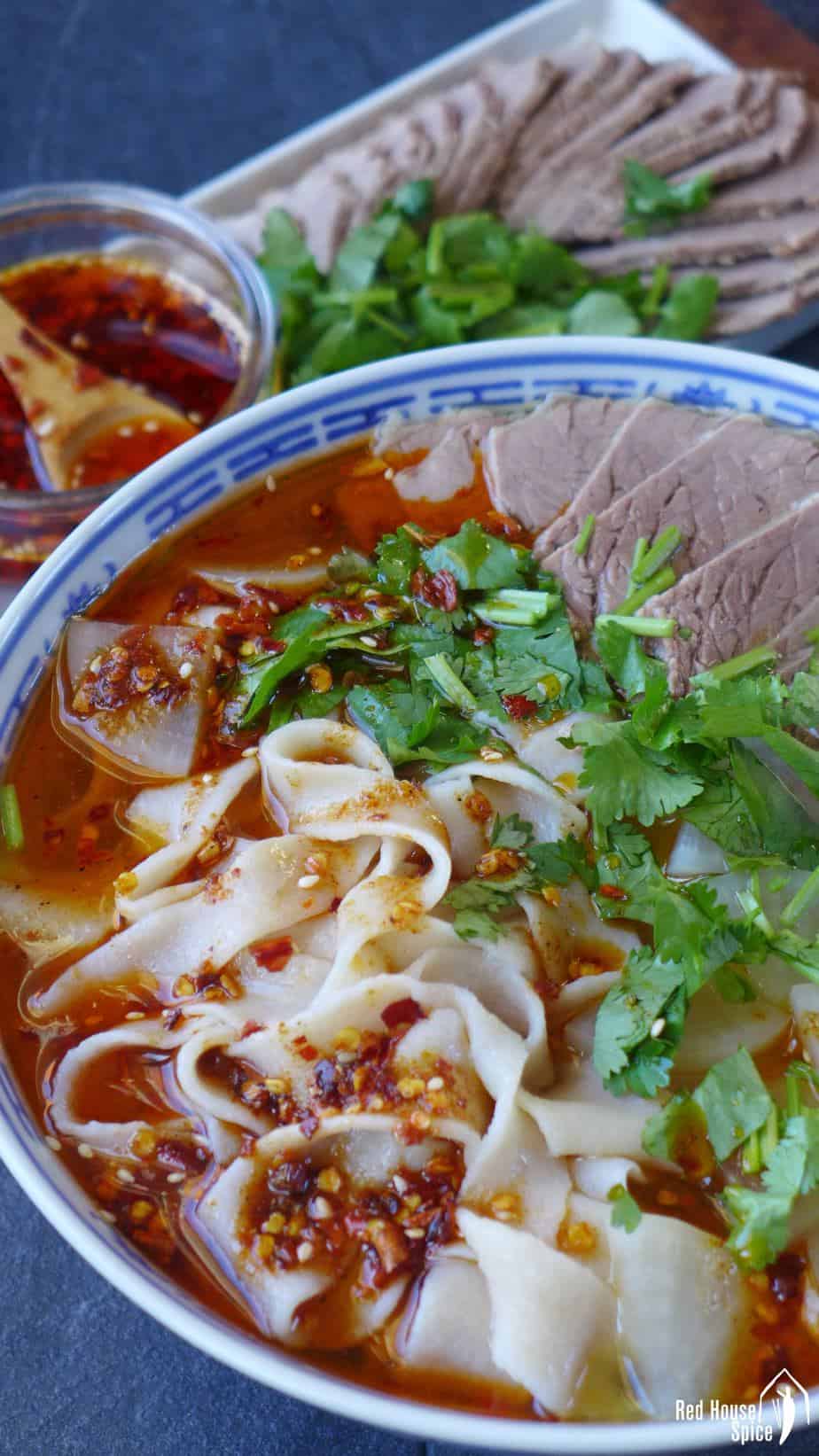
Six essential elements
A nice bowl of Lanzhou beef noodle soup consists of six essential elements:
- Clear, aromatic beef broth;
- Cubes/slices of cooked beef;
- Melt-in-your-mouth daikon slices (aka mooli/Chinese white radish) ;
- Elastic hand-pulled noodles;
- Generous amount of chilli oil;
- Fresh coriander or green garlic to garnish
A culinary art of noodle making
Strictly speaking, Lanzhou beef noodle soup is not supposed to be homemade. Or, let me put it another way. It’s almost impossible to imitate it, particularly the rich, aged beef broth (Restaurants claim they have secret ingredients, formulas, etc.) and the sophisticated hand-pulled noodles (it can come in 7-9 different sizes).
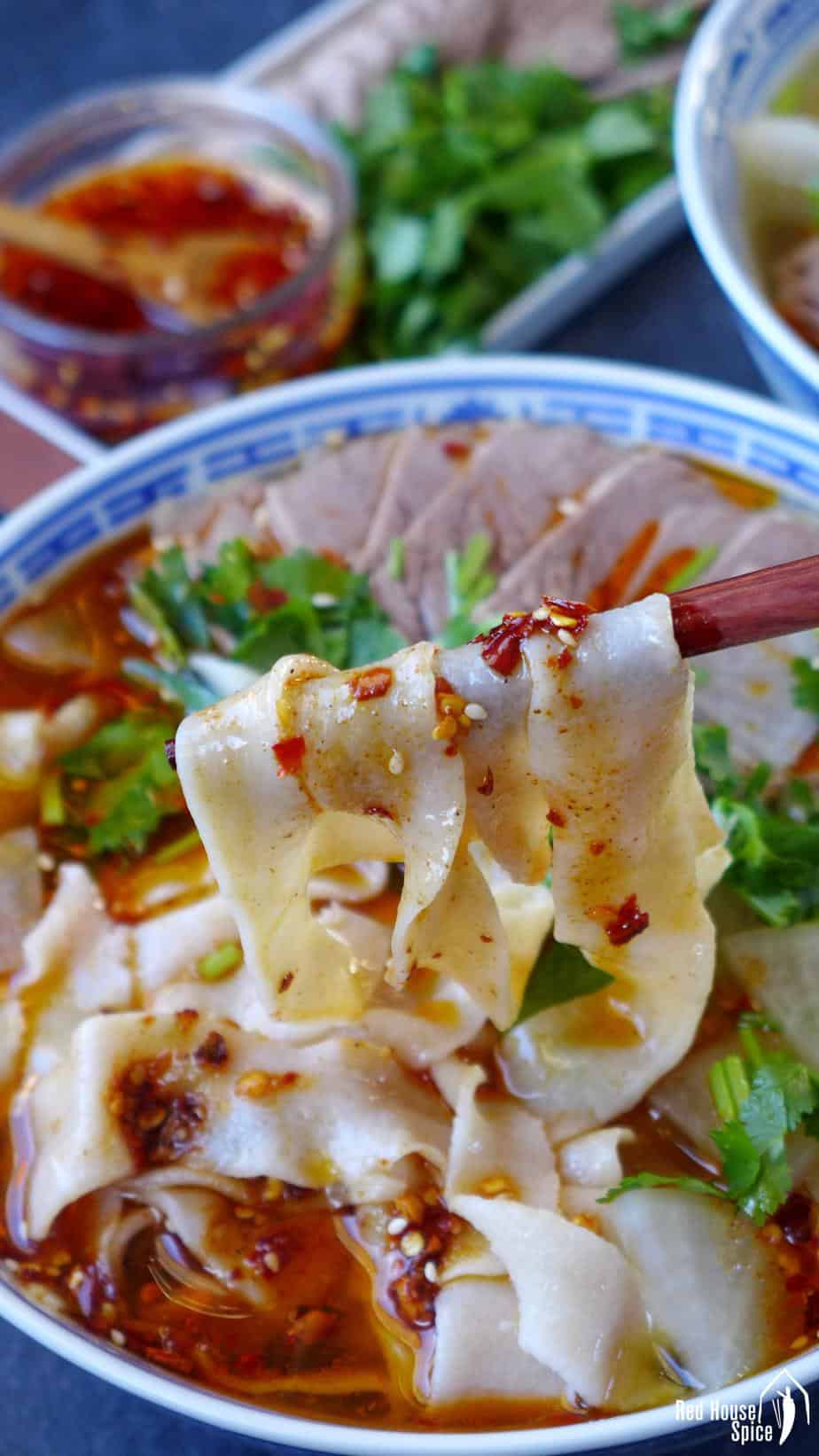
Have a look at the video that I took on my Culinary Tour of China which shows you the fascinating process. Words just can’t describe how amazing this culinary art is.
That is why I’ll never dare to claim that I make authentic Lanzhou beef noodle soup. What I’m sharing today is a simplified version that can be easily made in your own kitchen.
An easy way to make hand-pulled noodles
I have a separate post Hand-Pulled Noodles which shows an easy technique to make noodles for this dish.
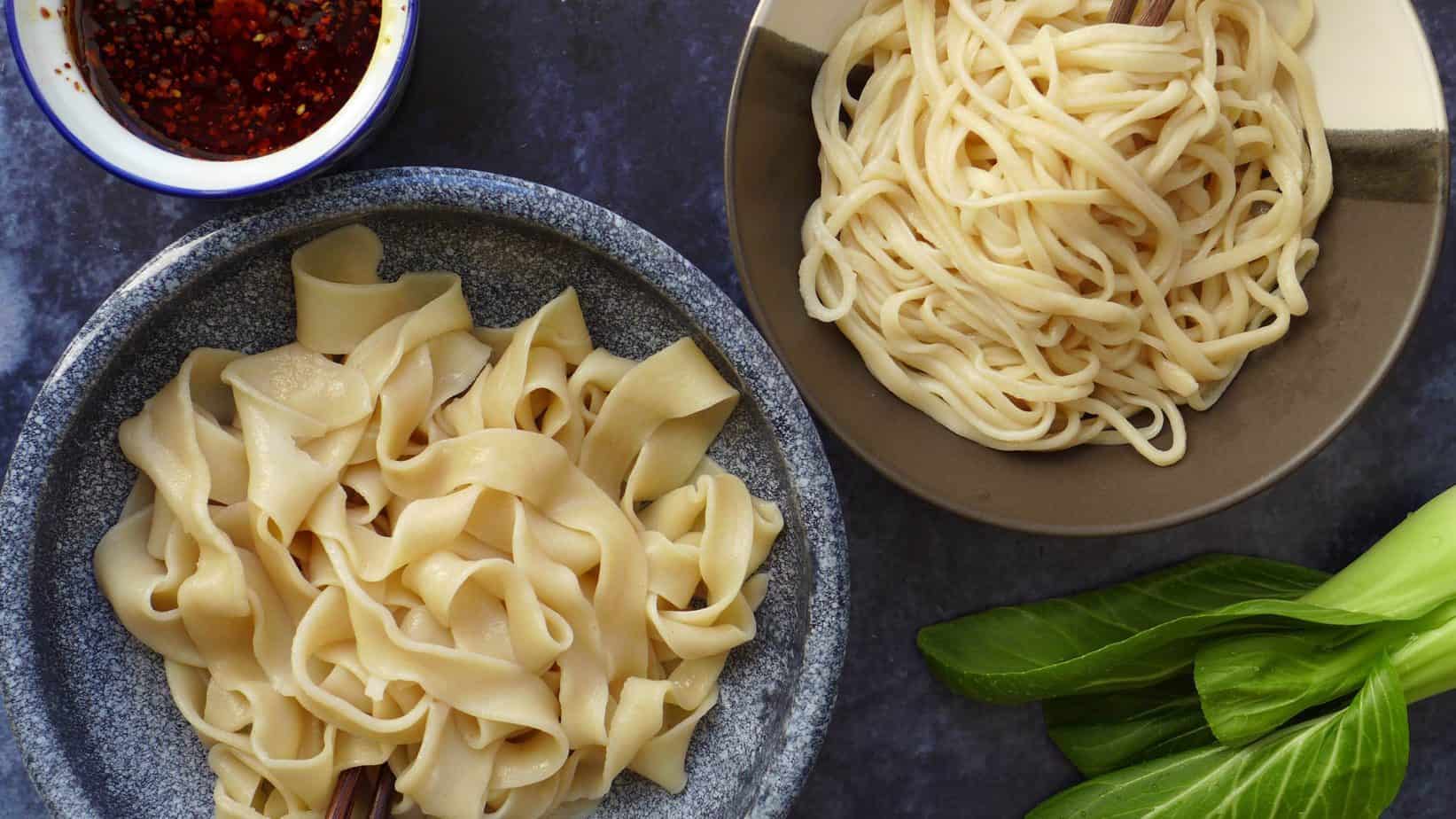
To make 2 servings, for example, you would need:
- 250 g all-purpose flour
- ¼ teaspoon salt
- 125 ml water (you may need to adjust depending on the brand of your flour)
- cooking oil, for coating the dough
Here are the basic procedures (find more detailed instructions in this post).
- Make a smooth, fairly firm dough using flour, salt & water.
- Divide then flatten the dough. Coat with oil then leave to rest.
- Bring a pot of water to boil. Cut the dough pieces into strips.
- Pull the strips into long noodles one at a time. Drop into the water.
- Cook for 1-2 minutes then dish out.
Use other types of noodles
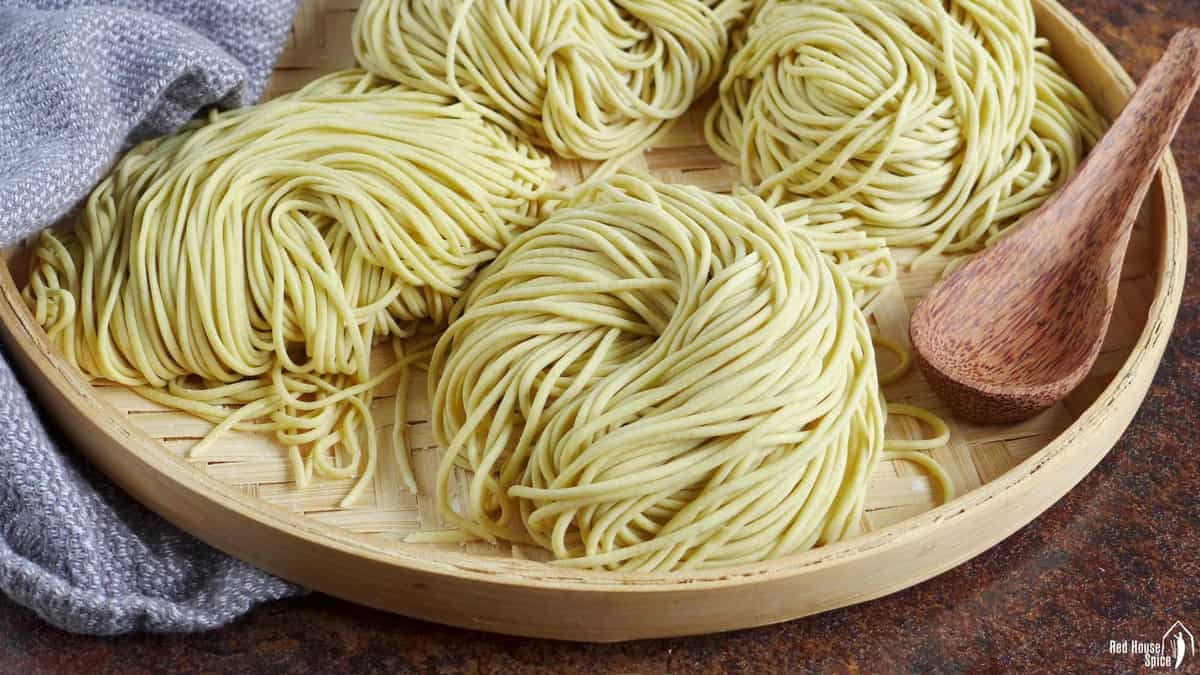
Although not traditional, other types of noodles can be used for this noodle soup too. Homemade ramen noodles (see image above) or hand-rolled noodles are great alternatives. If you’re tight on time, simply boil some shop-bought dried noodles.
How to make a delicious broth
For better flavour and texture, I recommend you choose the beef cuts which have generous amounts of marbling and/or a high amount of connective tissue. Beef shank/shin, for example, is a good choice for this dish. Apart from that, I also add some beef bones. They provide extra flavour and a nice amount of fat to the broth.
In my recipe at the end of the post, you will see a long list of spices used to flavour the beef broth. Find as many as you can. Believe me, they do make a difference!



Make your own Chinese chilli oil
To me, Chinese chilli oil is indispensable for Lanzhou beef noodle soup. It gives the dish an extra zing, as well as a more appetizing look. I highly recommend you make your own when possible.
Some people also like to add some Chinese black rice vinegar to the dish, have a try to see if it’s your cup of tea (not mine to be honest).
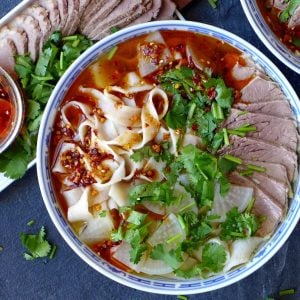
Lanzhou beef noodle soup (兰州牛肉面)
Ingredients
- 1400 g large chunks of beef - 3lb
- 2 beef bones
- 3000 ml water - 13 cups
- 1.5 teaspoon salt - or to taste
Spices & herbs
- 2 star anises
- 1 small piece cassia cinnamon
- 2 bay leaf
- 1 teaspoon Sichuan peppercorn
- 1 teaspoon white pepper
- 1 pinch fennel seeds
- 1 pinch cumin seeds
- ½ teaspoon ground licorice - or 4 slices licorice root
- 2 pieces sand ginger
- 3 dry chilli
- 1 piece ginger
- 3 stalks scallions
You also need
- 500 g daikon/Chinese white radish - 1.1 lb
- 6 servings hand-pulled noodles - or dried noodles
- Coriander - chopped
- Chinese chilli oil - to taste
Instructions
- Put beef chunks and beef bones into a pot filled with cold water. Bring the water to a full boil. Use a spoon to skim off the froth on the surface.
- Add all the herbs and spices (see note 1). Leave to simmer for about 2 hours (until the beef is cooked through).
- Take the beef out to cool and discard the bones, herbs and spices. When cold, cut the beef into either thin slices or small cubes(see note 2).
- Cut daikon into thin slices. Put into the beef broth. Cook for 15 minutes or so until very soft to bite.
- Cook noodles in another pot with plenty of water. Drain and rinse under cold water for a few seconds.
- Place noodles in serving bowls. Pour in hot broth and daikon. Top with beef slices/cubes. Garnish with fresh coriander and homemade chili oil.
NOTES
NUTRITION
NUTRITION DISCLOSURE: Nutritional information on this website is provided as a courtesy to readers. It should be considered estimates. Please use your own brand nutritional values or your preferred nutrition calculator to double check against our estimates.


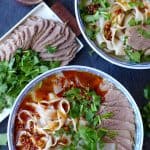
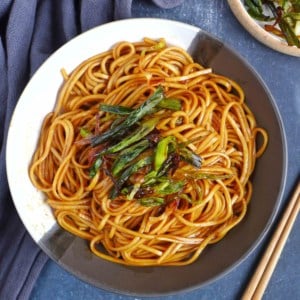
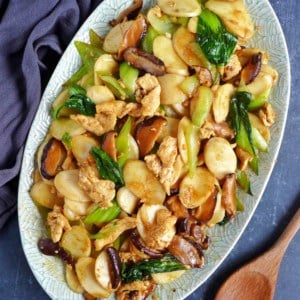
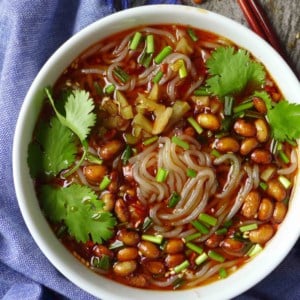
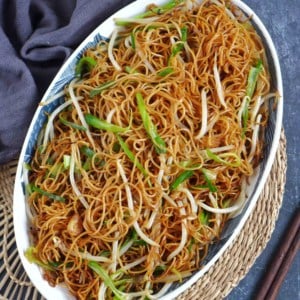
Hi person who wrote and shared this recipe. I love you. Thank you so so much for putting this into the world. It is one of my favourite meals and I live far far away from any place that could sell it to me. It is healing for the soul to cook and eat this. I go lazy and use a pressure cooker to make this after work and it’s something I spend the whole day looking forward to.
So happy to know my recipe satisfies your craving!
A million yums!
Glad you liked my recipe!
I currently live in Lanzhou (I moved here in August 2020 from Heilongjiang Harbin). I’m not sure I would say Lanzhou is in northwest China since this capital of Gansu Province is considered the geographic center of China.
Hi Chan! You are right that Lanzhou is the “geographic centre” of China. However, Gansu is always considered to be part of Great Northwest (Da Xi Bei, 大西北) of China. Maybe this Wikipedia explanation will help you to understand Chinese regions better. Hope you enjoy your life in Lanzhou.
Glad that you pointed out that the true taste just can’t be duplicated outside of Lanzhou. I always thought it had to do with the water or something like that. Never even occurred to me it was secrets held in the recipe. One thing I didn’t see mentioned is adding a hard “tea” boiled (I believe that’s what they were) egg. Yep, extra slices of beef and an egg thrown in, now that is a bowl of beef noodle.
Hi Chris! Yes, marble tea eggs are always sold on the side. Like the extra slices of beef, tea eggs are optional choices. I could never eat an egg after a bowl of noodles. So filling!
Everything about the noodles. Watching the preping of them, the eating and the contentment afterwards. And the photo opportunity on the stairs.
Great memories indeed! It was a pleasure to travel with you on my Culinary Tour of China.
This looks delicious!! I want a bowl right now!
Thanks Heddi! You really need to go to Lanzhou to have it!
This lady is right. Lanzhou noodles in 1915 are to die for.
Thank you Peter! We really enjoyed those noodles, didn’t we?